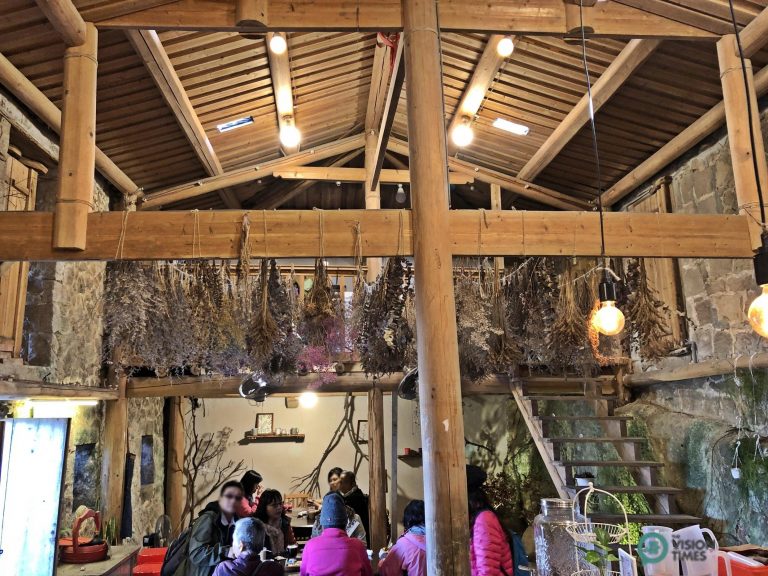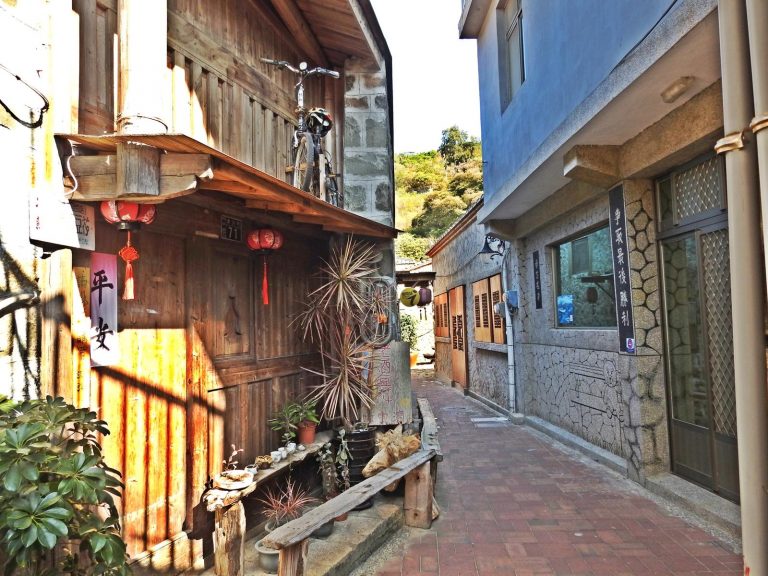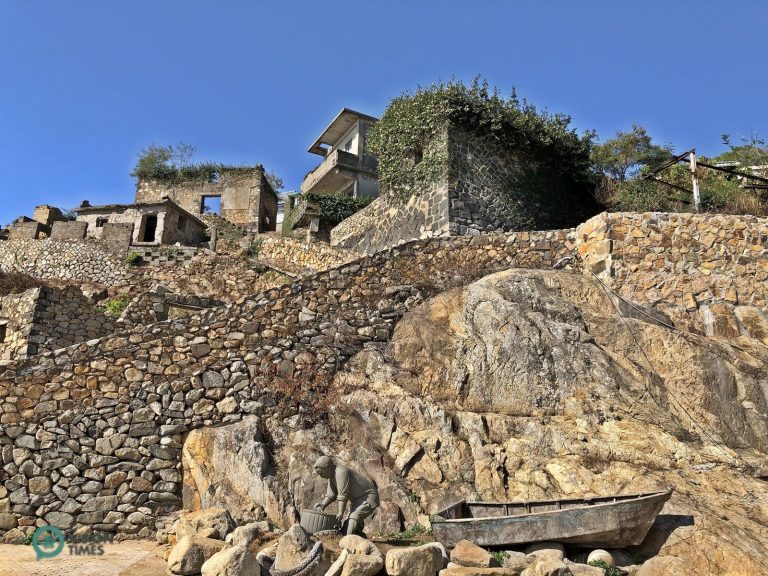Besides its natural beauty and amazing military tunnels, another striking feature of Taiwan’s Matsu Islands is its villages with traditional stone houses. Among them are Qinbi Village (芹壁聚落) in Beigan (北竿), Jinsha Village (津沙聚落) in Nangan (南竿), and Fuzheng Village (福正聚落), as well as Dapu Village (大埔聚落), in Dongju (東莒).

Traditional stone houses in these villages were mainly constructed in the Mindong architectural style (閩東建築 eastern Fujian-style) in the 1800s and 1900s with local yellow granite blocks or blue limestone blocks from China.
Please watch the following video of the eastern Fujian-style old houses in Taiwan’s Matsu Archipelago.
Since these compact dwellings were constructed in the form of a square that resembles a Chinese seal or chop, they are often referred to as “chop buildings” (一顆印式建築).

The walls of the stone houses were built in different layouts, some in pattern layouts, while others are in a random layout (亂石砌). The most commonly seen patterns are the parallel pattern (工字砌) and herringbone pattern (人字砌). The stone houses built in parallel and herringbone patterns were lived in by rather wealthy people, as the construction cost was higher, and those in a random layout were lived in by average people, as they are relatively inexpensive.

With a gable roof atop two inclines, stone houses in the Matsu Islands are also characterized by high and small windows because it’s very windy and cold during the monsoon season in winter, and pirates were active in that region in old times.

The red tiles on the roofs in the Matsu Islands are covered with rock blocks to prevent them from being blown off. Since the ventilation of the stone houses is rather good, they are referred to as “houses that breathe (會呼吸的房子).” Nowadays, the booming development of the tourism industry, coupled with subsidies from the government, has contributed to the restoration and renovation of dilapidated stone houses in the Matsu Islands in recent years. Many of them have turned into restaurants, guesthouses, or cafés.

Slogans against Mao on walls of traditional stone houses
In addition to various types of old signage on the walls of the traditional stone houses, it is even more surprising that slogans against the Chinese Communist regime set up during the military administration can still be spotted on every corner of the Matsu Islands.

Take for instance “Kill Zhu De and Eradicate Mao Zedong (殺朱拔毛),” “Oppose Communism and Fight Soviet Russia (反共抗俄),” “Litigate Against Communist Spies (檢肅匪諜),” “Recover the Mainland (光復大陸),” “Civil-Military Cooperation (軍民合作),” “Save the Compatriots in Mainland (解救大陸同胞),” etc. These slogans are evident testaments to the Matsu Islands’ history and reminiscences of decades-long tensions between Taiwan and China.

Qinbi Village (芹壁聚落) in Beigan is the most iconic traditional stone house village in the Matsu Islands. Perched along a steep hill slope facing the sea with Turtle Island near the shore, stone houses there are well preserved. With a touch of laid-back Mediterranean atmosphere, Qinbi is called a “Mediterranean town on the Taiwan Straits.” It’s pleasant to stroll around and have light meals or a cup of coffee at a cozy café/restaurant there.

Jinsha Village (津沙聚落) was once the second-largest village on Nangan, which is also a nice place to visit. Since the adjacent beach is covered by golden sand, the village was thus named Jinsha (金沙), but the first character of its Chinese name has been changed to another character with the same pronunciation.

Some traditional stone houses in narrow alleys have transformed into guesthouses and local delicacy shops. There are many abandoned houses on the east side of the village, as many villagers started to leave and seek a better life in mainland Taiwan in the 1970s.

Just behind a nice beach and close to Dongquan Lighthouse and Mysterious Little Bay (神秘小海彎), Fuzheng Village (福正聚落) was once the most prosperous fishing village in Dongju (東莒). Though its original vitality faded after residents moved elsewhere due to the fishery decline, many traditional stone houses have been restored in recent years.

Dapu Village (大埔聚落) was the second largest village in Dongju. Dapu was once a busy harbor crowded with fishing boats mainly for catching yellow croaker (黃魚), which is a very popular fish among people in Taiwan and China. This abandoned village has experienced a rebirth in recent years as some old traditional stone houses have been turned into cozy guesthouses with a nice view of the ocean and the beautiful old harbor.

There are some classic eastern Fujian-style houses in Xiju (西莒). Most of them were built with local rocks and wood imported from China’s Fuzhou. It is a pity that many traditional stone houses with classic beauty have not been restored. However, it’s still one of the good places to witness stone walls constructed in different pattern layouts in the Matsu Islands.









